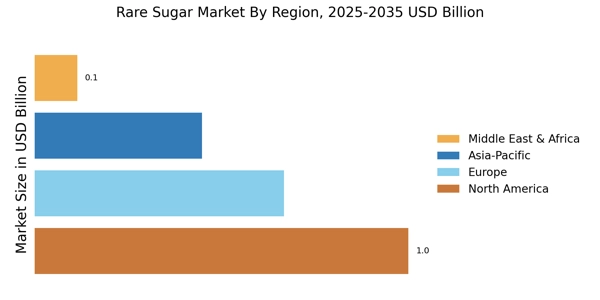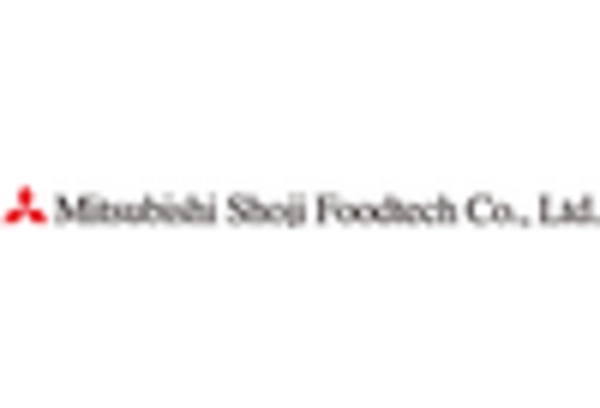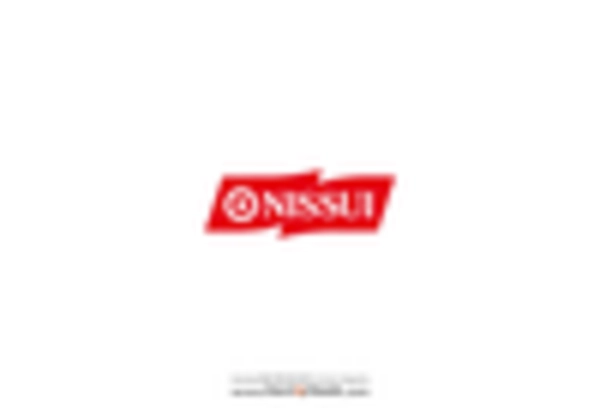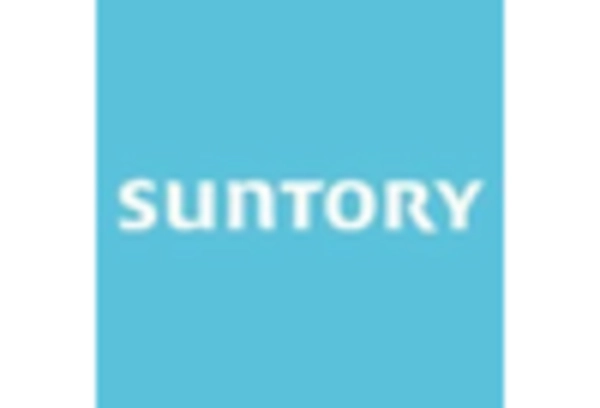Rising Popularity of Functional Foods
The Rare Sugar Market is closely aligned with the rising popularity of functional foods, which are designed to provide health benefits beyond basic nutrition. Consumers are increasingly seeking foods that support overall well-being, and rare sugars fit this trend by offering sweetness with potential health advantages, such as lower glycemic responses. This alignment with functional food trends is likely to drive the adoption of rare sugars in various health-oriented products, including dietary supplements and fortified foods. Market data suggests that the functional food sector is expanding rapidly, with a significant portion of new product launches incorporating rare sugars to cater to health-conscious consumers. This trend underscores the potential for rare sugars to play a pivotal role in the evolving landscape of functional food offerings.
Increasing Demand for Natural Sweeteners
The Rare Sugar Market is experiencing a notable surge in demand for natural sweeteners, driven by a growing consumer preference for healthier alternatives to traditional sugars. As individuals become more health-conscious, they are actively seeking products that offer lower caloric content and minimal impact on blood sugar levels. Rare sugars, such as allulose and tagatose, are gaining traction due to their unique properties that provide sweetness without the associated health risks of conventional sugars. Market data indicates that the rare sugar segment is projected to grow at a compound annual growth rate of approximately 5.5% over the next five years, reflecting a shift in consumer behavior towards more natural and health-oriented food options.
Growing Interest in Sustainable Ingredients
The Rare Sugar Market is benefiting from a growing interest in sustainable ingredients, as consumers become more aware of the environmental impact of their food choices. Rare sugars, often derived from natural sources, are perceived as more sustainable alternatives to conventional sugars, which may involve intensive agricultural practices. This shift towards sustainability is prompting food manufacturers to explore rare sugars as part of their ingredient sourcing strategies. Market Research Future indicate that products featuring sustainable ingredients are increasingly favored by consumers, leading to a rise in demand for rare sugars in various applications. This trend not only aligns with consumer values but also positions rare sugars as a forward-thinking choice in the quest for environmentally responsible food production.
Regulatory Support for Healthier Ingredients
The Rare Sugar Market benefits from increasing regulatory support aimed at promoting healthier food ingredients. Governments and health organizations are advocating for reduced sugar consumption to combat rising obesity rates and related health issues. This regulatory environment encourages food manufacturers to explore alternative sweeteners, including rare sugars, which are perceived as healthier options. For instance, certain rare sugars have been recognized as safe for consumption and are exempt from some sugar-related regulations, thus facilitating their incorporation into various food products. This supportive framework is likely to enhance the market presence of rare sugars, as manufacturers seek to comply with health guidelines while meeting consumer demand for better-for-you products.
Innovations in Food and Beverage Applications
The Rare Sugar Market is witnessing a wave of innovations in food and beverage applications, as manufacturers experiment with rare sugars to enhance product offerings. These sugars are being utilized in a variety of products, from baked goods to beverages, due to their ability to provide sweetness without the calories associated with traditional sugars. The versatility of rare sugars allows for their incorporation into low-calorie and sugar-free formulations, appealing to a broad consumer base. Market analysis suggests that the beverage sector, in particular, is increasingly adopting rare sugars, with a projected increase in product launches featuring these sweeteners. This trend indicates a growing recognition of rare sugars as viable alternatives in the competitive landscape of food and beverage development.


















Leave a Comment